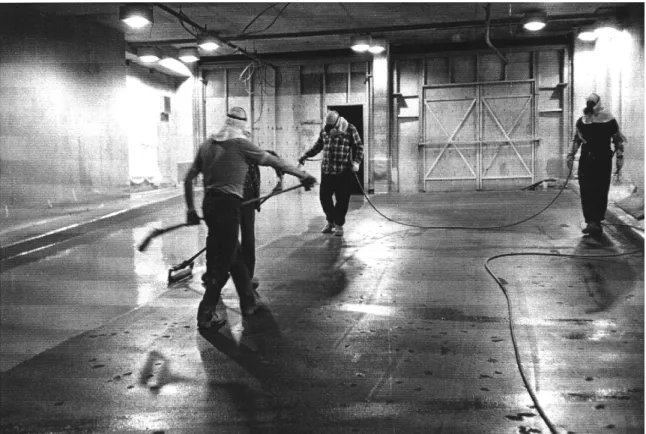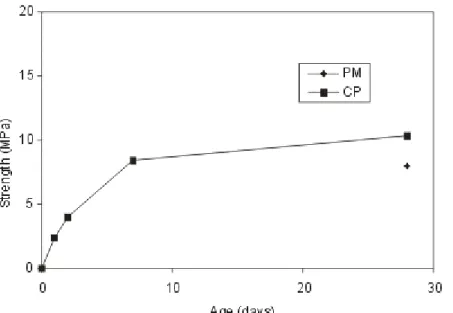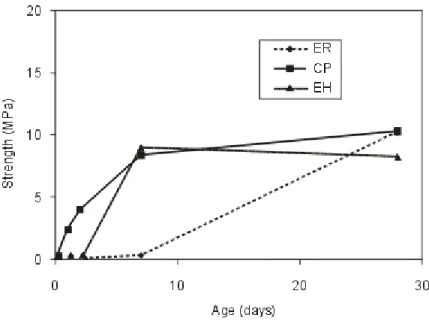Publisher’s version / Version de l'éditeur:
Construction Canada, 42, Nov. 6, pp. 11-14, 2000-11-01
READ THESE TERMS AND CONDITIONS CAREFULLY BEFORE USING THIS WEBSITE.
https://nrc-publications.canada.ca/eng/copyright
Vous avez des questions? Nous pouvons vous aider. Pour communiquer directement avec un auteur, consultez la
première page de la revue dans laquelle son article a été publié afin de trouver ses coordonnées. Si vous n’arrivez pas à les repérer, communiquez avec nous à PublicationsArchive-ArchivesPublications@nrc-cnrc.gc.ca.
Questions? Contact the NRC Publications Archive team at
PublicationsArchive-ArchivesPublications@nrc-cnrc.gc.ca. If you wish to email the authors directly, please see the first page of the publication for their contact information.
NRC Publications Archive
Archives des publications du CNRC
This publication could be one of several versions: author’s original, accepted manuscript or the publisher’s version. / La version de cette publication peut être l’une des suivantes : la version prépublication de l’auteur, la version acceptée du manuscrit ou la version de l’éditeur.
Access and use of this website and the material on it are subject to the Terms and Conditions set forth at Factors affecting the proper installation of parking garage membranes
Mailvaganam, N. P.; Collins, P.
https://publications-cnrc.canada.ca/fra/droits
L’accès à ce site Web et l’utilisation de son contenu sont assujettis aux conditions présentées dans le site LISEZ CES CONDITIONS ATTENTIVEMENT AVANT D’UTILISER CE SITE WEB.
NRC Publications Record / Notice d'Archives des publications de CNRC:
https://nrc-publications.canada.ca/eng/view/object/?id=bf42ce6c-a0f5-41e8-8613-61352786573d https://publications-cnrc.canada.ca/fra/voir/objet/?id=bf42ce6c-a0f5-41e8-8613-61352786573d
Factors affecting the proper installation
of parking garage membranes
Mailvaganam, N. P.; Collins, P.
A version of this paper is published in / Une version de ce document se trouve dans : Construction Canada, vol. 42, no. 6, November 2000
www.nrc.ca/irc/ircpubs NRCC 44512
Factors Affecting the Proper Installation of Parking Garage
Membranes
by N.P. Mailvaganam and P.G. Collins
A concrete deck in parking garages must be protected against ingress of water and chloride ions to prevent corrosion of reinforcement, serious degradation and, eventually, structural impairment, of the deck. The standard protective measure is to install an elastomeric waterproofing membrane system.
A typical waterproofing membrane system consists of a series of coats. First, the primer or sealer promotes adhesion of the membrane to the concrete. Next is the membrane itself, the primary waterproofer which bridges cracks and prevents the ingress of chloride ions and water (Figure 1). This is followed by the wear coat, which contains embedded aggregate to provide abrasion resistance and prevent wear of the membrane. The final tie coat bonds the aggregate firmly to the wear coat.
The types of coating systems used in membrane systems include the following: one-component polyurethane; two-component polyurethane; two-component epoxy-urethane and one-component water-based neoprene. Variations in chemical composition and mix ratios in the different systems govern the application characteristics and the degree of sensitivity to site factors.
What affects the performance of waterproofing membrane systems can be summarized under three categories:
1) application factors: mixing of components at cold temperatures, poor mixing of the components, incorrect proportioning of the components, and delayed application of the mixed components;
2) substrate conditions: moisture in the substrate and poor surface preparation; 3) ambient weather conditions: variations in humidity and temperature.
IRC research has led to a new understanding of these three factors. This article discusses mainly the application factors. Some recommendations based on the research findings relating substrate and ambient conditions are also presented.
Mixing at cold temperatures. Many applicators store the coating components overnight in trucks, hence mixing them at cold temperatures is not uncommon. At cold
temperatures the increase in viscosity causes improper mixing, making it more difficult to apply the membrane and to achieve the desired coating thickness; both of these
determinants are critical to good waterproofing characteristics. The response of a coating to temperature variation is shown by the extent to which the viscosity of the membrane system changes (Figure 2).
Figure 2. Effect of temperature on the viscosity of a typical two-component waterproofing membrane system. Viscosity influences the effectiveness of spraying and other key characteristics such as levelling and the running of the material sprayed on vertical surfaces. The drastic effect that low temperature produces is shown in the increased viscosity (cohesion) obtained at 10°C.
Poor mixing. In the field, poor mixing is often the result of using mixers with a poor mixing action and incorrect mixing sequence. The manufacturer’s mixing instructions stipulate that the addition of the resin (polymer) and hardener (the chemical that initiates the polymerization) components should occur at the commencement of the mixing cycle. In practice, however, the hardener component is sometimes added halfway through the mixing cycle. Furthermore, in many applications the manufacturer’s stipulated mixing time is not adhered to. Such mistakes increase the permeance of the membrane, allowing greater ingress of water and chloride ions.
The effect of poor mixing on the early mechanical properties (tensile strength and elongation capability) of some membranes can be drastic: some reach the desired tensile strength at only 28 days (Figure 3). The membrane system is often subjected to
considerable stress from post-installation construction activity of other trades. Foot traffic and the dragging of items across the poorly cured coating can damage the membrane, promoting deterioration.3
Figure 3. Effect of poor mixing on the tensile strength development of a typical waterproofing membrane. The effect is illustrated by comparing an extreme case of poor mixing (PM) to that of a correct
proportioning (CP) procedure. The cure of the poorly mixed sample was so retarded that the strength value could not be recorded until 28 days had elapsed.
Incorrect proportioning of the components. Two-component membrane products are formulated with definite mix ratios of the two components. Correct proportioning therefore governs the development of the designed properties. Incomplete decanting in the field, however, alters these proportions and an excess of either resin or hardener can be present. The presence of excess resin (ER) in the mix has more drastic effects (a greater increase in the permeance of the membrane) than the presence of excess hardener (EH). However, increased levels of the hardener component can result in drastic
retardation of the rate of tensile strength development for some coatings (Figure 4). Post-construction activity on the deck increases the potential for deterioration.
Figure 4. Effect of incorrect proportioning of the resin and hardener components on the tensile strength development of a typical waterproofing membrane. Both ER and EH retard the development of tensile strength in comparison to that of the sample made with CP.
Delayed Application. Most membranes are formulated to provide for an application time up to 60 minutes after mixing. An undue delay between mixing of the components and applying the membrane system to the concrete is a concern particularly in summer and when large batches are used. These conditions may shorten the “pot life” of the mix, causing poor sprayability and possibly reduced adhesion to the concrete.4
Practical Recommendations
• Follow the manufacturer’s specifications on mixing and application • Avoid mixing membrane components at low temperatures
• Pay careful attention to the proportioning of components when mixing • Apply the membrane within 30 minutes after mixing
• Avoid excess surface moisture in the concrete before installing the membrane
• Avoid applications in either high or low temperatures and in high humidity conditions • Low temperature/low humidity applications create more serious problems than do
high temperature/high humidity applications
• Avoid ambient temperatures outside the 10-28°C range and relative humidities outside the 30-70% range
• Avoid a concrete surface profile that significantly exceeds the stipulated membrane thickness
• Avoid construction traffic on membranes until proper cure is achieved
References
1. Feldman, D. Durability of polymers used in the building industry. 5th Canadian Building and Construction Congress, Montreal, Nov. 1988, pp. 167-174.
2. Davis, A. and Sims, D. Weathering of polymers, Applied Science, London and New York. 1983, pp. 34-39.
3. Moller, L. and Hansen, J.H. Practical aspects on protecting of exterior concrete structures by surface coating, First International Conference on Deterioration and repair of reinforced Concrete in the Arabian Gulf, CIRIA/BSE, Bahrain, Oct. 1985, pp. 46-52.
4. Soebbing, J. B. Tips on improving application of plural component polyurethane linings to pipelines, Journal of Protective Coatings and Linings. May 1994, pp. 148-155.
Mr. N.P. Mailvaganam is a Principal Research Officer in the Building Envelope and Structure
Program of the National Research Council’s Institute for Research in Construction.
Mr. P.G. Collins is a senior technical officer in the Urban Infrastructure Rehabilitation



